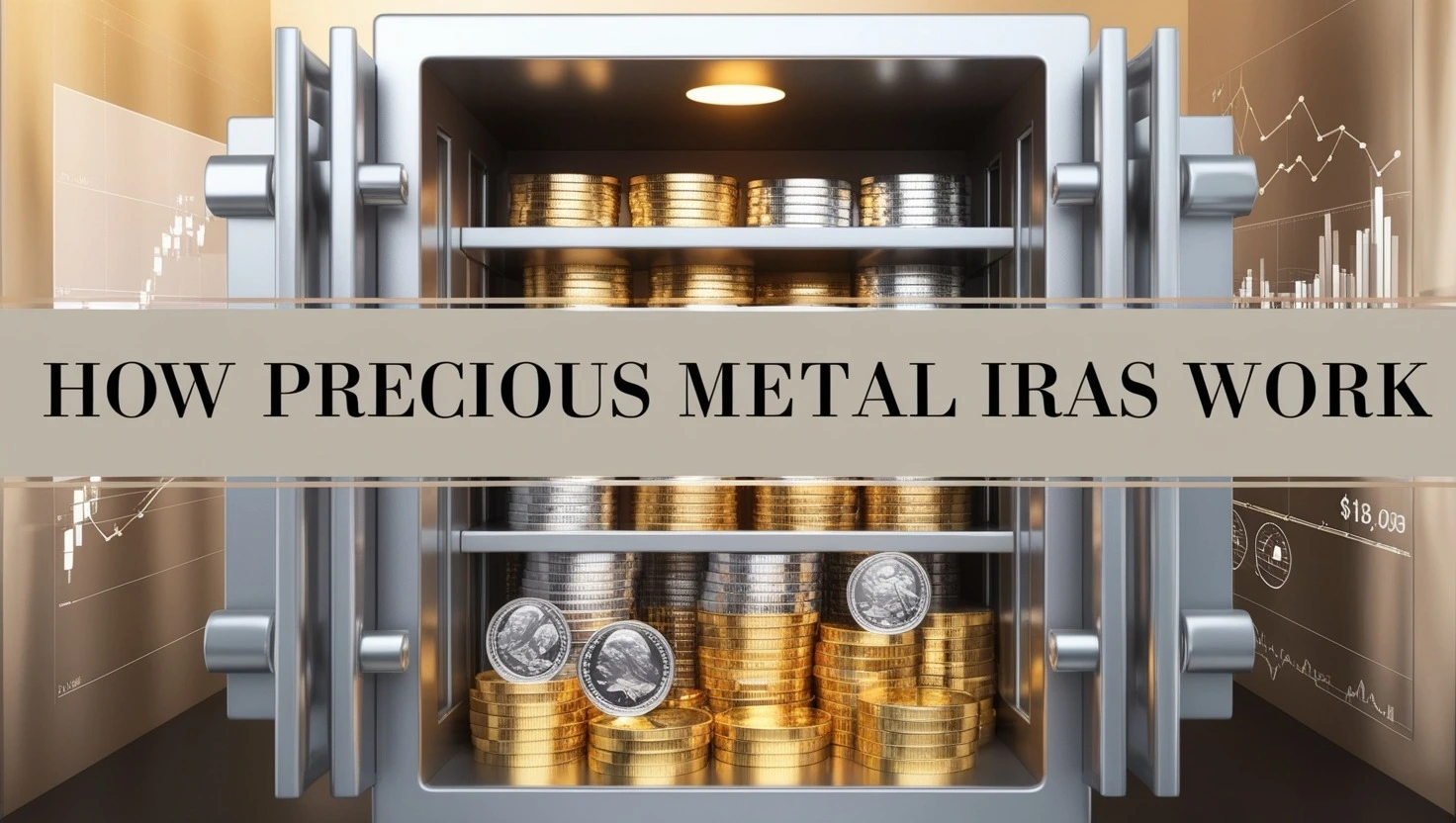How Do Precious Metal IRAs Work? When it comes to retirement savings, figuring out what works best can feel a bit like finding the secret sauce to grandma’s pudding.
Precious Metal IRAs are one of those intriguing options that is got a lot of folks talking.
In a nutshell, Precious Metal IRAs allow you to invest in physical metals like gold, silver, platinum, and palladium as part of your retirement plan.
Unlike your regular IRAs which are filled with stocks, bonds, and mutual funds, these bad boys are all about tangible assets.
Picture stacks of shiny coins or bars safely tucked away, not just some numbers on a screen.
This makes them quite the unique player in the investment world.
Now, why on earth would someone choose a Precious Metal IRA over a traditional one?
Well, it boils down to diversification and security.
When the economy goes on a rollercoaster ride, precious metals are known to hold their value.
It is like having that solid, dependable friend amidst all the chaos of market changes.
Diversifying your retirement portfolio with precious metals can act as a hedge against inflation or economic downturns.
It is not foolproof, but hey, it can be a smart move to minimize risk.
In summary, understanding the basic principles of Precious Metal IRAs helps in deciding if they fit your retirement strategy.
Whether you’re a seasoned investor or a newbie, grasping the fundamentals is step number one.
How to Set Up a Precious Metal IRA
Setting up a Precious Metal IRA might sound complicated, but it is really just a matter of following a few straightforward steps.
Let’s break it down to keep things as simple as possible.
First off, you are gonna need to choose a custodian and Goldco might be the one you need.
This is not just anybody.
Custodians are professionals who specialize in holding and managing your IRA assets.
They keep your investments safe and handle all the legal stuff.
The next step is all about filling out paperwork, which sounds dull but is essential.
You will need to complete an IRA application.
Do not forget to provide the typical information like your social security number and beneficiary details.
This paperwork essentially opens the door to your new investment.
Once your IRA is open, it is time to fund it.
You can do this by rolling over your funds from an existing retirement account or by making direct contributions.
Think of this as feeding your future nest egg.
It is important to get the numbers right here, so consider reaching out for some professional guidance to make sure everything lines up.
After funding your account, the next step is selecting the metals you want.
Gold, silver, platinum or palladium?
Each has it is ups and downs, so weigh your options carefully based on your investment goals.
Your custodian can help here too, advising on options that fit your plan.
Finally, you will purchase the metals.
Simple, right?
The custodian will handle the buying process and make sure everything is stored safely.
You will want to ensure that metals are held in an approved depository so they are secure and insured.
This way, you can kick back and relax while your investment does its thing.
Types of Precious Metals You Can Invest In
When it comes to precious metal IRAs, choosing the right metal can feel a bit like selecting the perfect ice cream flavor.
It is all about personal taste and what is most beneficial for your financial goals.
The IRS approves a select few for these kinds of investments: gold, silver, platinum, and palladium.
Each comes with its own personality and market trends, so let’s break it down.
Gold is the classic choice and a crowd favorite.
It is like vanilla – reliable and always in demand.
It is known for being a safe haven during financial downturns, providing a form of investment stability.
But like all things, it can come with a higher price tag and less volatility, which means less opportunity for big growth on your invested dollar.
Silver tends to be more affordable than gold and can be pretty dynamic.
Think of it as chocolate – sweet, lovable, and great in a diverse portfolio.
It is industrial demand can cause it is price to swing more than gold, offering potential for greater gains (and losses) within short spans.
Silver’s role in technology and industry makes it intriguing for trend-watchers.
Platinum stands out much like a scoop of exotic matcha.
It is rarer and driven more by industrial applications, especially in the automotive sector.
Price-wise, it can be more volatile due to this industrial reliance, making it a more adventurous option.
Finally, there’s palladium the dark horse of metals.
It is uses are largely industrial too, often closely tied with the automotive industry like platinum.
This makes it another candidate for those who enjoy a bit of thrill in their investment decisions.
Before choosing, keep an eye on the trends for each type and consider how these might fit your own investment strategy and appetite.
Balancing these metals in your IRA can be just as rewarding as it is fun to explore the options.
Benefits and Risks of Precious Metal IRAs
Precious Metal IRAs come with their own set of perks and pitfalls. For many investors, the main appeal lies in their ability to act as a hedge against inflation.
When money loses it is purchasing power, metals like gold tend to hold or even increase in value, offering a cushion during economic uncertainties.
Aside from inflation protection, precious metals add diversification to your portfolio.
Putting all your eggs in one basket is not usually the best strategy, and metals provide that extra layer of security and balance.
Yet, it is important to keep an eye on the potential downsides.
One of the primary concerns with precious metal IRAs is market volatility.
Metals can fluctuate in price quite dramatically, sometimes due to factors well beyond your control or prediction, like shifts in global politics or industrial demands.
Storage and custodial fees are another consideration.
Unlike other types of IRAs, storing physical metals requires an approved facility, which is not free.
These costs can add up over time, potentially eating into your investment returns.
Moreover, there are restrictions on what you can actually hold in a precious metal IRA.
Only specific coins and bars qualify, all meeting certain purity standards.
So, it is crucial to ensure your investments fit the criteria to avoid any tax-related headaches.
Balancing the benefits and risks is key to deciding if this type of IRA is right for you.
Consider consulting a financial advisor to tailor your approach to your personal risk tolerance and long-term retirement goals.
Conclusion: Is a Precious Metal IRA Right for You?
Deciding whether to add a Precious Metal IRA to your retirement game plan can be like choosing the right tool for the job.
It is all about what you want to achieve with your investments.
If you are all about stability and hedging your bets against the unpredictable twists of the economy, then this type of IRA could be a smart move.
On the flip side, if you are more of an adventurous investor who does not shy away from volatility and potential risks, it is important to weigh those against the costs and restrictions that come with holding physical metals.
Remember, every investment has its quirks, and it is about finding what aligns with your overall strategy.
Reflect on what your personal investment goals are and how comfortable you are with the ups and downs that might come with precious metals.
And hey, it is always a good idea to chat with a savvy financial advisor who knows their stuff to guide you on this journey.
There you get it How Do Precious Metal IRAs Work?
With all these factors in mind, if you are feeling curious or have experience with precious metals, I would love to hear your thoughts.
Drop a comment below and join the conversation!

